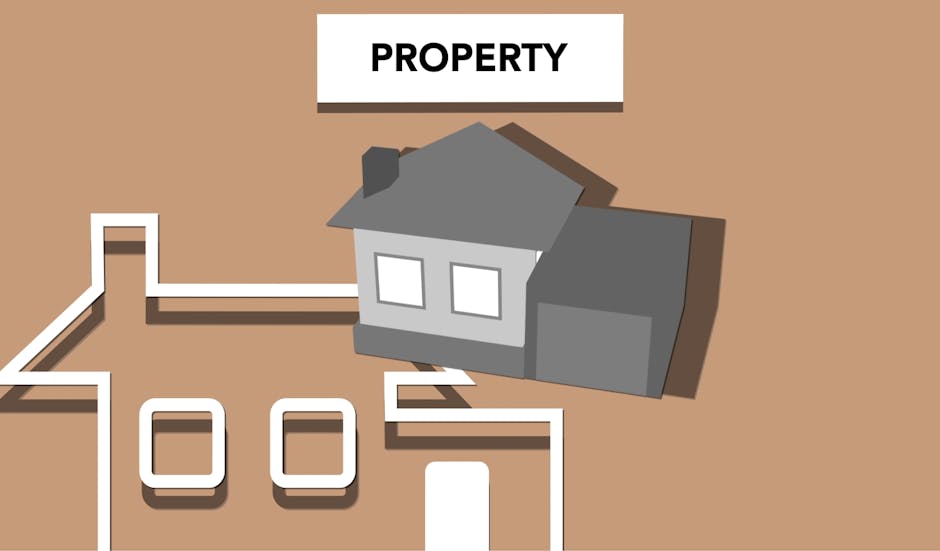Real Estate Investing

Introduction to Real Estate Investing
Understanding the Basics
Real estate investing may seem daunting, but once you grasp the fundamentals, it can be incredibly rewarding. At its core, real estate investment involves purchasing, owning, managing, or selling properties to generate profits. Whether you’re considering residential homes, commercial spaces, or rental properties, understanding the different types of investments will set the foundation for your journey. To start, consider these crucial points:
- Research the Market: Familiarize yourself with local property trends.
- Know Your Numbers: Understand expenses, cash flow, and ROI.
- Build a Network: Connect with other investors, agents, and property managers.
Benefits of Real Estate Investing
Investing in real estate can provide a myriad of benefits, making it one of the best ways to invest your money. Here’s why you might consider diving in:
- Passive Income: Rental properties can generate a steady cash flow.
- Appreciation Potential: Over time, property values typically increase.
- Tax Advantages: Earn income while enjoying various tax deductions.
On my journey, I remember my first investment—a small duplex that turned into a reliable source of passive income. Each month, seeing that rental check was not just gratifying—it fueled my passion for real estate investing even more. The combination of immediate returns and long-term growth is what makes real estate a compelling choice.

Setting Your Real Estate Investment Goals
Short-term vs. Long-term Goals
Once you’re excited about real estate investing, it’s essential to define your goals. You’ll find that setting clear objectives can guide your strategy and keep you on track.
- Short-term goals might include flipping a property for quick profit or generating immediate cash flow through rental income.
- Long-term goals could involve building a portfolio for retirement or achieving financial independence.
For instance, my first goal was to flip a house within a year. However, as I learned more, I realized the power of long-term holdings for passive income.
Creating a Realistic Plan
Creating a realistic plan is key to achieving your goals. Start by breaking down your objectives into actionable steps:
- Research & Identify Markets: Know which neighborhoods are promising.
- Budgeting: Determine your investment capacity, including renovations and maintenance.
- Timeline: Set timelines for each goal, whether you plan to buy your first property in three months or exit your investment in ten years.
Reflecting on my journey, I remember relying on a detailed spreadsheet to track my goals and progress. This structured approach not only kept me focused but also motivated me to achieve milestones, making me feel connected to my investment journey.

Types of Real Estate Investments
Residential Properties
With your goals set and a plan in place, it’s time to explore the diverse types of real estate investments available. One of the most approachable options for beginners is residential properties. These typically include single-family homes, townhouses, and multifamily units. Here are a few advantages of investing in residential properties:
- High Demand: People always need places to live, ensuring consistent rental income.
- Easier Financing: Lenders favor residential properties, offering favorable terms to investors.
I remember my excitement when I purchased my first single-family rental; it provided immediate cash flow and a sense of accomplishment.
Commercial Properties
On the other hand, commercial properties offer a different set of opportunities and challenges. This category includes office buildings, retail spaces, warehouses, and even mixed-use developments. Consider these benefits:
- Higher Income Potential: Commercial properties often command higher rental prices compared to residential.
- Longer Leases: Tenants typically sign longer leases, providing stability for your cash flow.
When I ventured into my first commercial space, the learning curve was steep, but the potential rewards made it worthwhile. Understanding the nuances of each property type enables you to choose the investment strategy that aligns best with your goals and risk tolerance.

Financing Your Real Estate Investments
Traditional Mortgages
Now that you’ve identified the types of real estate investments that interest you, the next step is securing financing. Traditional mortgages are often the go-to option for many investors. These loans come with steady interest rates and predictable monthly payments, making budgeting easier. Here are a few key points to remember:
- Low Down Payments: Many lenders offer options with as little as 3% down.
- Fixed vs. Adjustable Rates: Choose based on your risk tolerance and financial strategy.
When I purchased my first home to rent out, navigating the mortgage process felt overwhelming, but securing a fixed-rate mortgage provided peace of mind and financial stability.
Alternative Funding Options
While traditional mortgages are popular, alternative funding options can also be viable avenues for financing your real estate investments. These include:
- Hard Money Loans: Short-term loans from private investors based on property value, great for quick purchases.
- Crowdfunding: Platforms allow you to pool funds with other investors for larger projects.
I once used a hard money loan for a fixer-upper project. It was crucial for getting the deal, albeit with higher interest rates. Exploring both traditional and alternative financing will empower you to make smarter investment decisions that suit your unique situation.

Finding Profitable Real Estate Deals
Local Market Research
With financing in place, your next step is to find those profitable real estate deals. Understanding your local market can make all the difference. By diving deep into market research, you can uncover hidden gems that others might overlook. Here are some tips:
- Analyze Trends: Look at median home prices, vacancy rates, and recent sales details.
- Neighborhood Dynamics: Investigate amenities, school districts, and future developments that could affect property values.
I remember finding my best investment by attending neighborhood meetings, where I learned about upcoming projects that solidified my interest in the area.
Working with Real Estate Agents
While personal research is invaluable, collaborating with experienced real estate agents can streamline the process. Agents have a pulse on the market and access to listings before they hit the public. When choosing an agent, consider:
- Experience in Investment Properties: Ensure they understand the nuances of your investment approach.
- Strong Negotiation Skills: A good agent can potentially save you thousands.
My first agent not only helped me navigate tricky negotiations but also provided insights that transformed my investment strategy. By combining thorough market research with expert guidance, you’ll be well-equipped to spot and secure great deals in real estate.

Property Management Strategies
DIY Management
Now that you’ve secured a profit-generating property, it’s time to consider how you’ll manage it. One popular option is DIY management. This route can provide you with direct control over your investments, saving on management fees. Here are some benefits to think about:
- Cost Savings: No management fees mean more profits for you.
- Personal Touch: Building relationships with tenants can foster goodwill and encourage long-term residency.
When I managed my first rental alone, I got to know my tenants personally, which not only made communication easier but also resulted in lower turnover rates.
Hiring Property Management Companies
However, hiring a property management company can be immensely beneficial, especially if you own multiple properties or lack the time for hands-on management. Consider these advantages:
- Expertise: Management companies handle everything from tenant sourcing to legal issues.
- Time Efficiency: You can focus solely on your investment strategy while they manage daily operations.
For my second property, I opted for a management company due to their robust screening process. This decision ultimately resulted in quality tenants and peace of mind, allowing me to enjoy my investment more fully. By carefully weighing the pros and cons of DIY versus professional management, you can implement a strategy that aligns with your lifestyle and investment goals.

Understanding Real Estate Laws and Regulations
Landlord-Tenant Laws
As you manage your real estate investments, it’s crucial to understand the laws governing landlord-tenant relationships. These laws can vary widely by state and locality, impacting everything from rental agreements to tenant rights. Key considerations include:
- Security Deposits: Know how much you can collect and under what conditions it must be returned.
- Eviction Processes: Familiarize yourself with legal eviction procedures to ensure compliance.
I once found myself navigating a tricky eviction situation, and having a deep understanding of landlord-tenant laws ultimately saved me time and stress.
Tax Implications of Real Estate Investments
Equally important are the tax implications of your real estate investments. Understanding these can impact your profitability and investment strategy. Here are a few key points:
- Deductions: You may be eligible for deductions on mortgage interest, property taxes, and depreciation.
- Capital Gains Tax: Familiarize yourself with how selling a property could impact your taxes.
When I sold my first property, I was pleasantly surprised to utilize tax strategies that minimized my capital gains tax liability. By staying informed about real estate laws and tax obligations, you can enhance your investment effectiveness while ensuring that you’re in full compliance with regulations.

Exit Strategies for Real Estate Investors
Selling Your Property
Once you’ve successfully managed your investment, it’s essential to have a clear exit strategy in place. One straightforward option is selling your property. Timing your sale can maximize profits, so consider factors like market trends and property appraisal values. Here are some key points to remember:
- Staging and Curb Appeal: Invest time and money into making your property visually appealing to attract buyers.
- Pricing Strategically: Set a competitive price based on thorough market research.
When I sold my first investment home, I saw firsthand how a little staging and strategic marketing generated multiple offers, allowing me to sell above asking price!
Property Reinvestment Options
Another strategy is reinvesting your profits into new properties. This approach not only grows your portfolio but also leverages the equity you’ve built. Consider these reinvestment options:
- 1031 Exchange: This allows you to defer capital gains taxes by reinvesting in a like-kind property.
- Diversifying Property Types: Use proceeds to invest in different property types, such as commercial or multi-family units.
I initially reinvested my profits into a multi-family property, significantly increasing my cash flow. By considering various exit strategies, you’ll be better equipped to make informed decisions that align with your overall investment goals.

Building a Diversified Real Estate Portfolio
Balancing Different Property Types
As you move forward in your real estate investing journey, building a diversified portfolio becomes crucial. Balancing various property types—such as residential, commercial, and industrial—can mitigate risks and enhance your investment returns. Consider these key strategies:
- Mixing Property Types: This can help stabilize income streams, especially during market fluctuations.
- Geographical Diversification: Investing in multiple locations minimizes the risk of a downturn in any single market.
When I diversified into commercial real estate, I found it helped cushion the impact when my residential properties faced tenant turnover, proving the value of a well-rounded portfolio.
Managing Risk in Your Portfolio
Managing risk within your portfolio is vital to long-term success. Here are some effective strategies to consider:
- Conduct Regular Valuations: Keeping up with property values informs your decision-making.
- Use Insurance Wisely: Adequate coverage protects your investments from unforeseen events.
I remember once having to file an insurance claim for a minor fire in a rental unit. While it was stressful, my proactive insurance planning led to a quick resolution and minimal financial loss. By strategically balancing your property types and managing risks, you can cultivate a resilient real estate portfolio that stands the test of time and market volatility.

Real Estate Investing for Retirement
Using Real Estate to Generate Passive Income
As you think about your future, real estate investing can play a significant role in generating passive income for retirement. Unlike traditional savings, real estate can provide a steady cash flow that can support your lifestyle as you age. Here’s how:
- Rental Properties: Owning rental units allows you to collect monthly rent, creating a reliable income stream.
- Real Estate Investment Trusts (REITs): If property management isn’t your style, investing in REITs can offer dividend income without the headaches of direct ownership.
When I transitioned to retirement, my portfolio of rental properties became a lifeline, allowing me to enjoy life without financial worry while helping me reinvest in my passions.
Incorporating Real Estate into Your Retirement Plan
To incorporate real estate into your retirement plan effectively, follow these steps:
- Set Clear Goals: Determine how much passive income you need to sustain your desired lifestyle.
- Diversify Investments: Mix real estate with other retirement accounts to create a balanced portfolio.
During my retirement planning phase, I realized the importance of diversifying my income sources. Real estate not only brought me joy from property management but also gave me confidence in my financial future. By strategically using real estate as part of your retirement strategy, you can create a fulfilling and financially secure retirement that aligns with your lifestyle aspirations.







